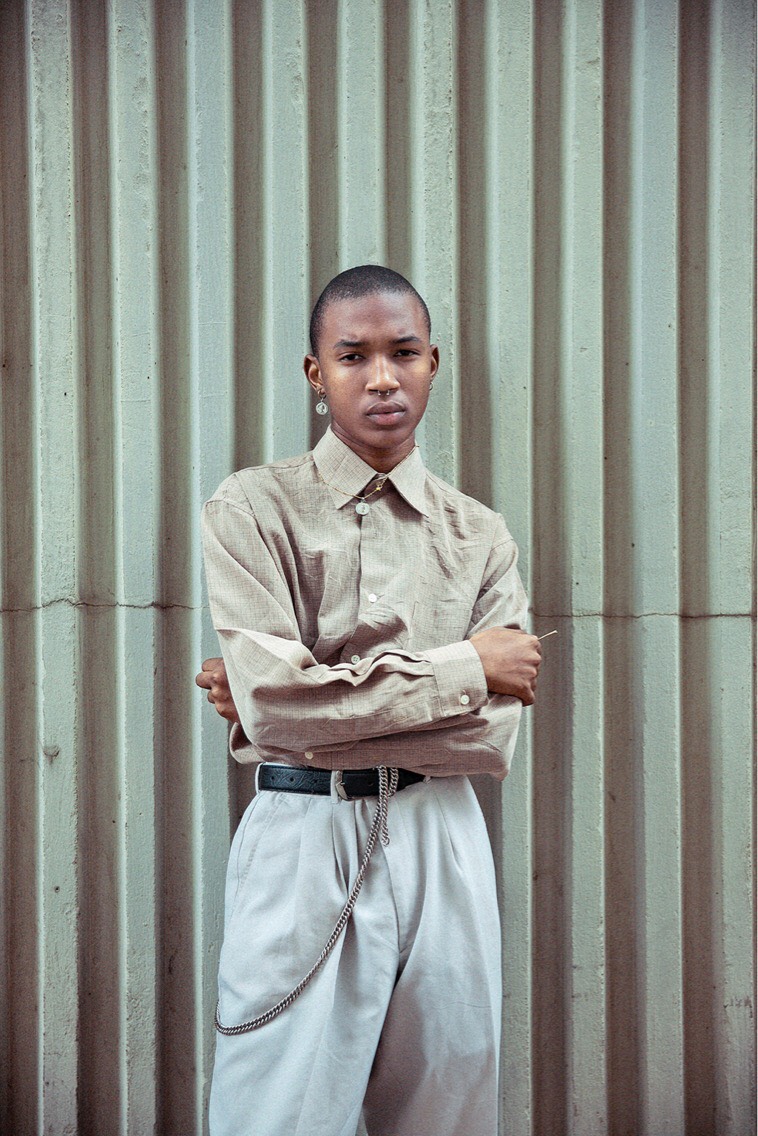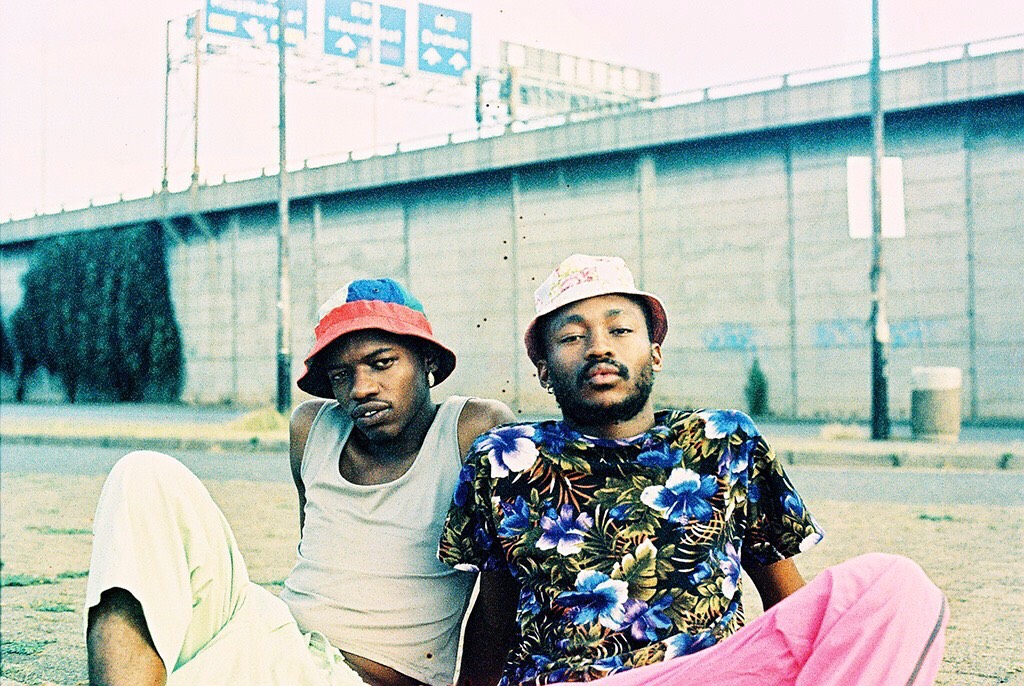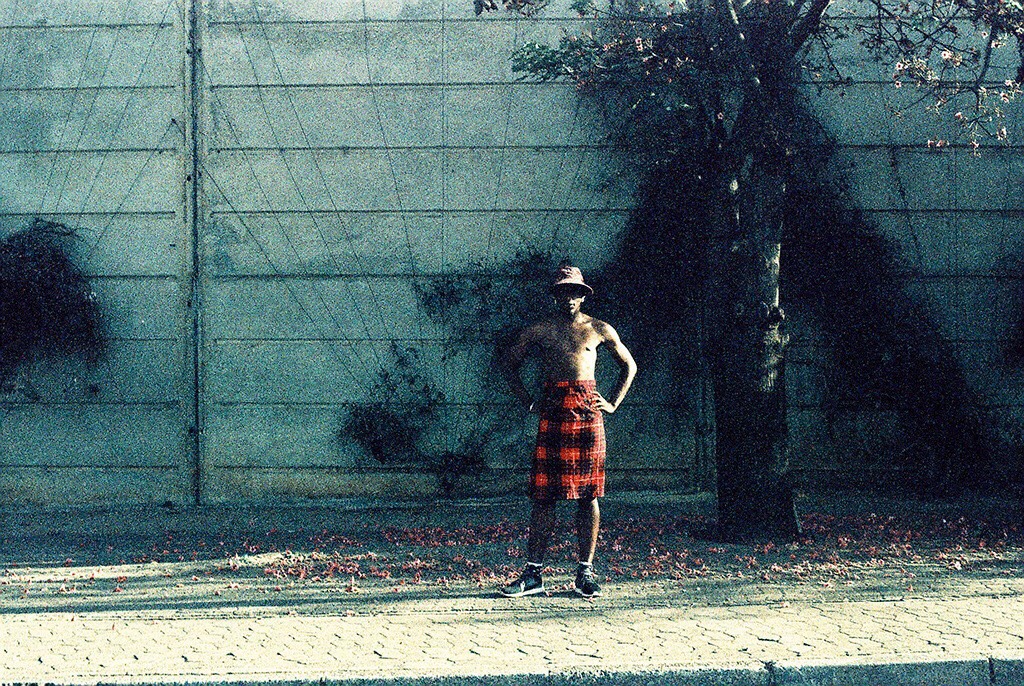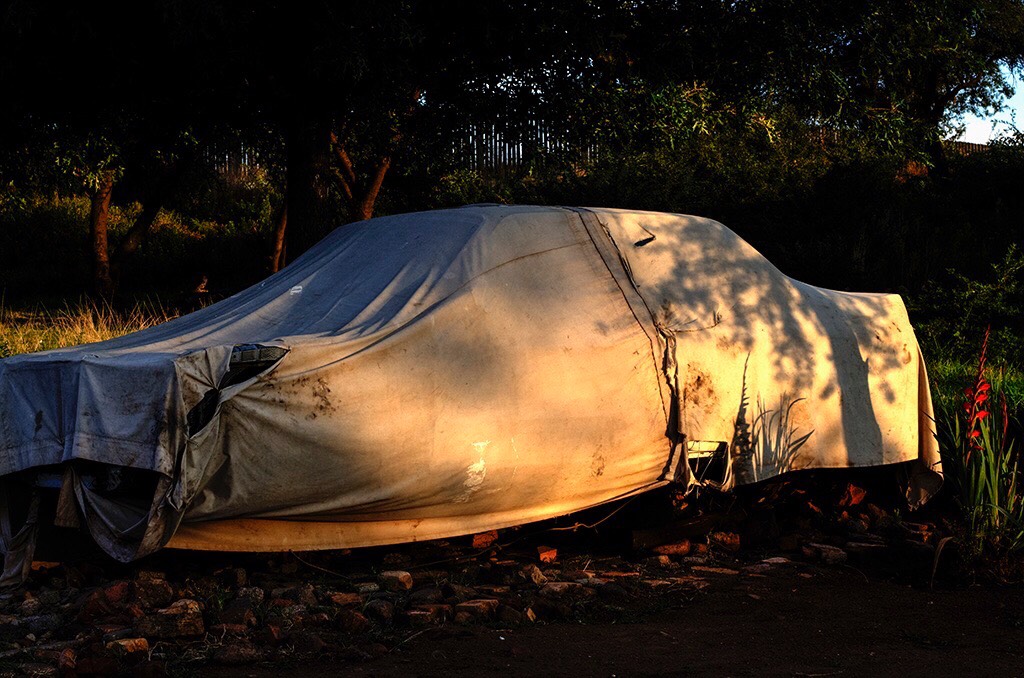Pentax K1000 SLR in hand. A series constructed with images taken over a span of 3 years. House of Realness materially expresses itself as a zine, featuring the faces of Joburg darlings, FAKA and Nkululeko Masemola.
Coming of age in Soweto, photographer Sipho Gongxeka spent most of his time playing football as a youngster, only beginning his expansive documentation of life in 2011. The visual auteur smoothly transitions between digital and analogue modes with a particular affinity to analogue image production.
His occupation sees him lecturing at the Market Photo Workshop where he was once a student. During his studies at the school (2011-2013) Sipho became the sixth recipient of the Tierney fellowship award which granted him the opportunity towards a mentorship programme under the guidance of Pieter Hugo. It is during his mentorship where the first project in a series of works was done titled, Skeem Saka which took its influence from the way in which television shows such as Yizo Yizo, Gaz’ Lami and films; like Mapantsula and Jerusalema depicted their characters – characters of seduction.
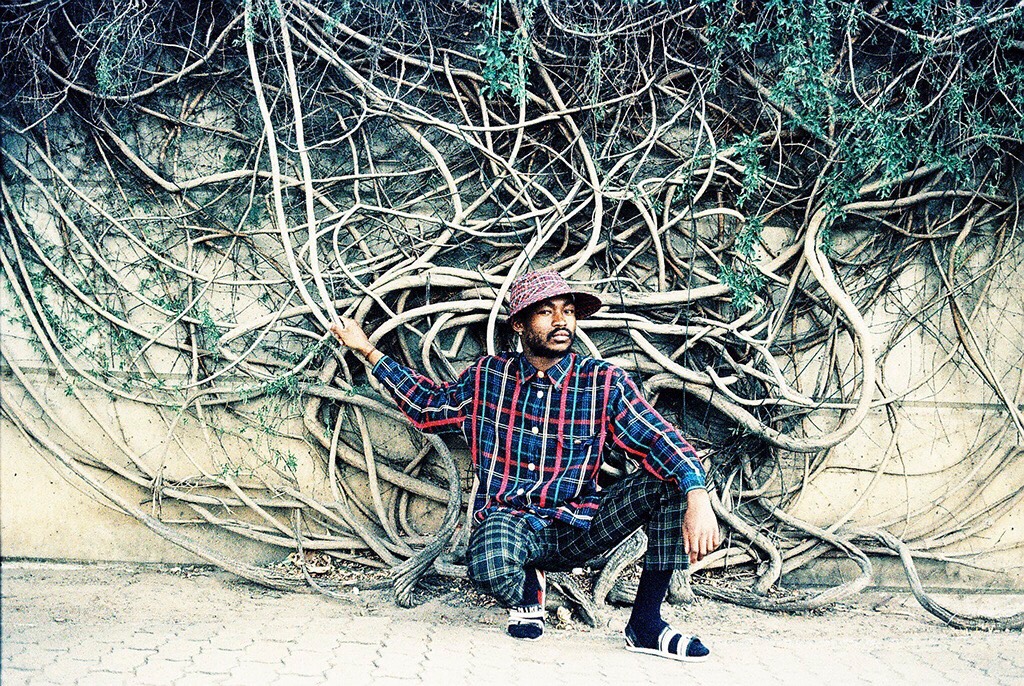
“These characters were young people who came from the township, just like me. The only difference between them and me is that they embodied style and glamour. At the same time, some of the characters were problematic in that they glorified criminality and prejudiced behaviour towards women. These characters continue to fascinate me. I am particularly interested in the idea that these popular images at times serve as sources of motivation for real life gangsters.” A dissection of the subject matters that Sipho’s work deals with reveals an immense curiosity towards understanding the social constructs and categorization or albeit classification systems that clothing imparts onto bodies – altering or affecting the way in which certain bodies are seen; a neat clean boxing system used in order to set apart. This is something that is investigated by the photographer in both Skeem Saka and House of Realness. A further enquiry that his work makes is into how truth and fiction are separated, where they intersect and if and whether they live in the same space together. “I am captivated by this circular relationship.”
A common thought that has been express in relation to cinematic work or any fictional narrative is that there really is no distinction between fiction and reality. As an avid storyteller myself, it has always been a belief that I share, as all stories are born from some sentiment of truth at least.
“Growing up in Soweto, I was continuously surrounded by fashion conscious individuals. To these individuals, clothing was a status symbol that separated ‘the men’ from ‘the boys’. It signified power and affluence… My photographs are self-consciously cinematic, part accident, part choreographed/ performed in order to highlight the relationship between the constructed image and its reference to ‘reality’.”
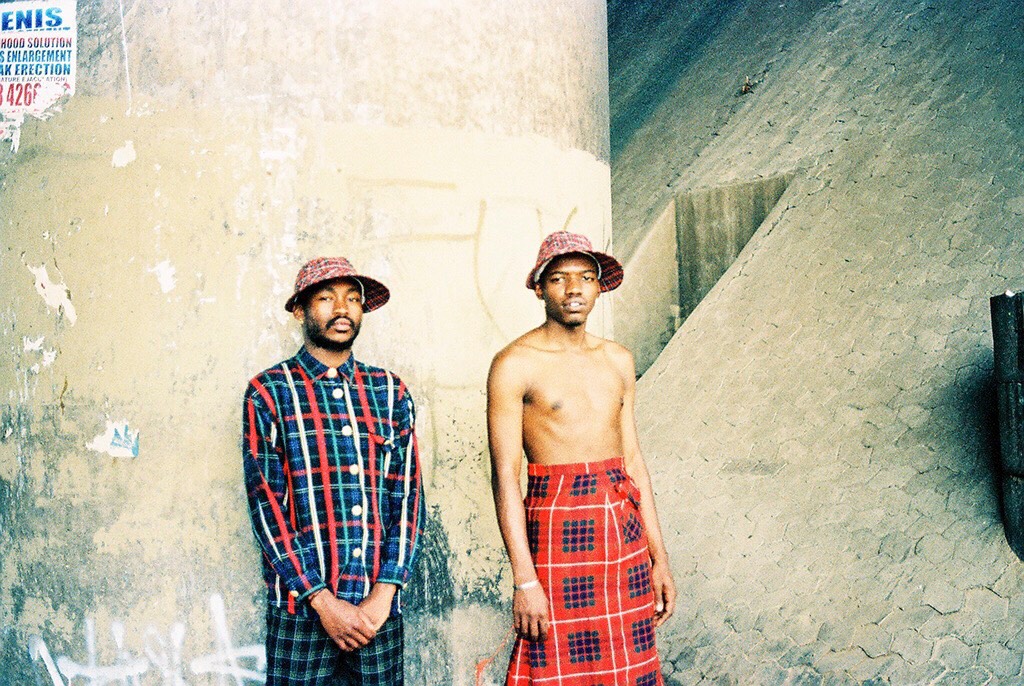
A casual conversation with Fela Gucci (Thato Ramaisa) about the role of fashion in queer culture as expressed in township communities led to a deeper unpacking, narrowing in on the perpetuation of stereotypes such as that sexuality and gender identity can be read in the way that a person presents themselves publicly specifically in relation to their dress in terms of style, colour, masculine and or feminine silhouettes etc.
“Oddly, when you are queer in the township, the expectation is to show that part of your identity in the way that you dress. The assumption is that a queer person is someone who wears bright colours, tight women’s clothing, always in the company of women, will have a funny or feminine hairdo and a super extroverted personality etc… Growing up in the townships, we have come to know and expect queer people to perform these stereotypes in particular ways.”
Developed in conversation with FAKA and Nkululeko Masemola, the zine looks into the politics of self-representation in black communities. Aimed at subverting these commonly held notions about black queer expression, the portrait series shows black queer men expressing their sexuality with immense ease, not through dress but through expression. Their clothing not bold or bright or womanly but bleached, clean toned, strong and characterized by what could be considered as “masculine silhouettes”.
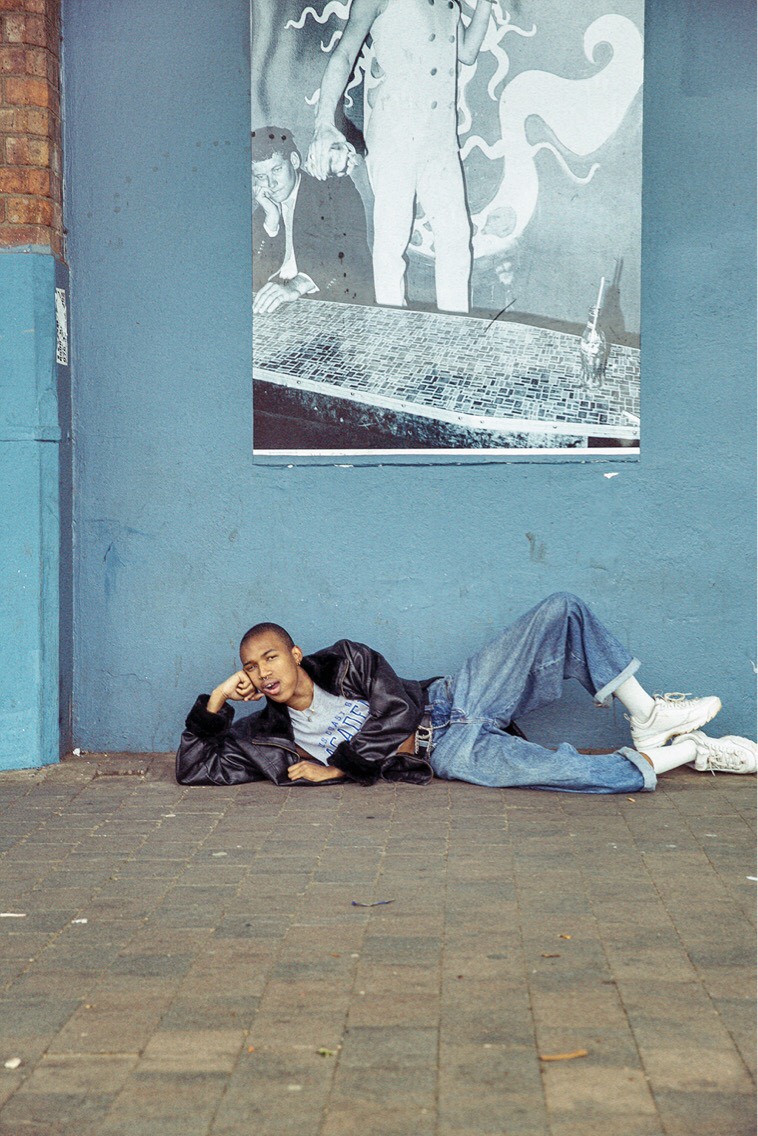
“My visual approach to this project aimed to create a set of nostalgic images with an aesthetic that mimics a style of photography reminiscent of what a street photographer; working in township communities in the 1980s, might have captured. The body of work can be considered a kind of imagined ‘archive’ of queer daily life during this era.”
To keep up with Sipho’s work follow his Instagram.
